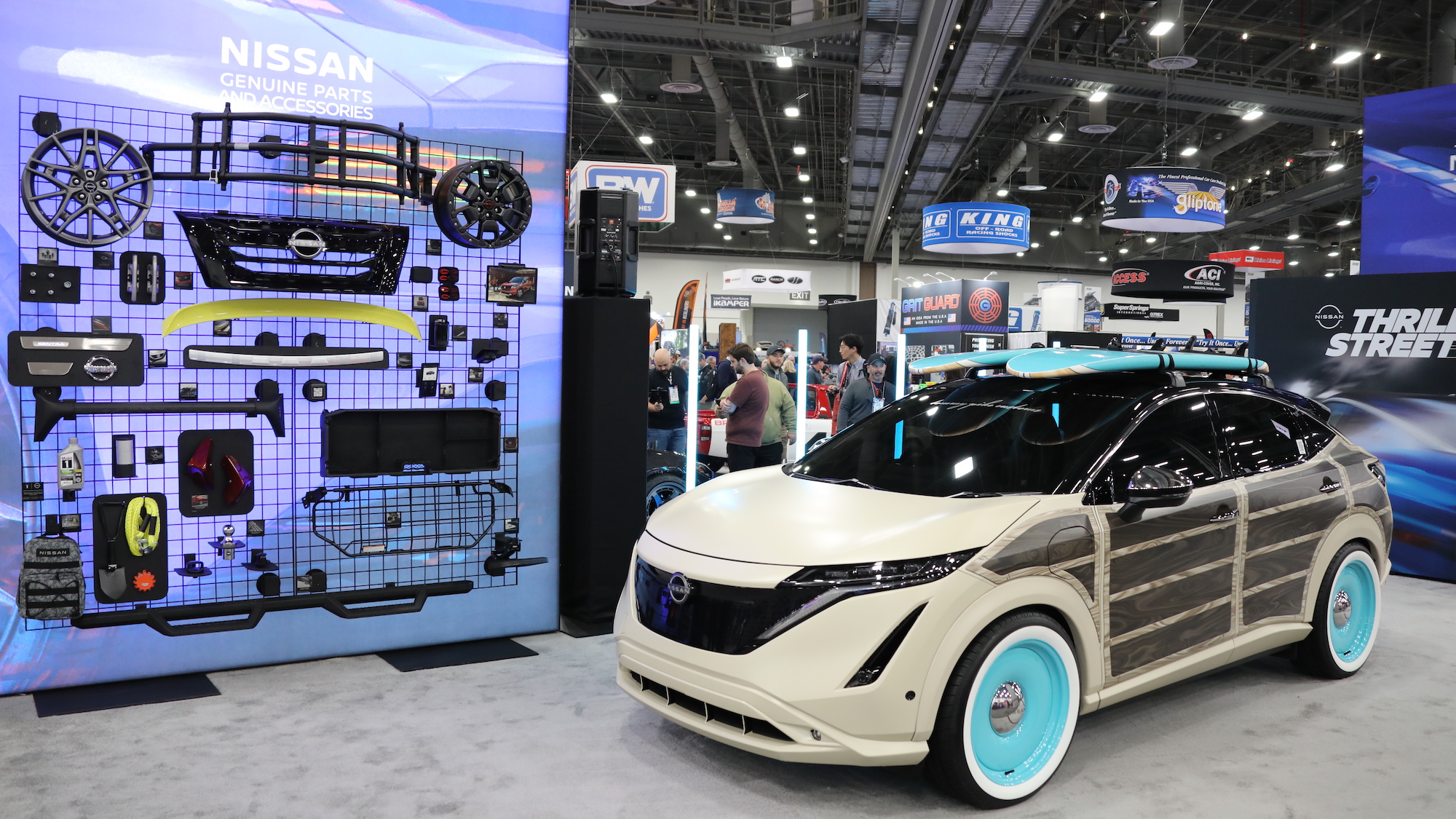

You may not have heard of the Speciality Equipment Market Association, but SEMA, as it is known, hosts a massive event annually to showcase the hottest parts and technology in the automotive industry. But with cars changing, and new types of vehicles emerging in the space, the 60-year-old organization debuted SEMA Electrified in 2019 to highlight gas-free machines and parts. Since then, the section has grown from a handful of features to 60 exhibits encompassing 21,000 square feet.
That’s a big leap for an organization that was founded by a bunch of performance equipment makers making a living from gas-guzzling hot rods. And yet it makes sense, says SEMA director of vehicle technology Luis Morales. Everything about the EV market is growing, including the aftermarket for spare parts, accessories, and components. It only makes sense to give these cars their share of the automotive spotlight—even if some of the event’s audience may be anti-electric.
“There are going to be diehard gas or diesel fans who may be hesitant to convert, and that’s fine. We love where we came from,” Morales told PopSci. “Then again, we also want to bring in all the new options that are coming out to the market.”
Encouraging electrification in the aftermarket
Long before the Prius and other electrified cars were even a twinkle in Toyota’s eye, SEMA formed as an alliance of manufacturers in 1963. Then, gas-powered vehicles were in full swing while alternative fuels were a far-off futuristic idea. As hybrid and electric technology started to take off, leaders at SEMA started to notice not just new powertrains but innovations like portable battery packs and full conversion kits.
SEMA vice president of marketing RJ de Vera points to California-based EV West as an example of a company seeing incredible success selling electric car parts, conversion kits that turn a gas-powered car into an EV, and charging accessories. Interest in full conversions is growing as parts for older gas-powered cars become scarce; after all, an electric motor is made up of just a few components, while combustion engines can contain hundreds of parts.
Conversion kits are a hot aftermarket item, de Vera says, some with wait lists that are two or three years long. EVs don’t require an engine, fuel tank, or fuel pumps, for example, and really just one moving part: the motor.
[Related: Chevy’s first electrified Corvette, the E-Ray, is a heavyweight built to be quick]
“That seems to be more and more of an interest point for a lot of enthusiasts that are doing a restomod,” de Vera says. Restomod is the process of revamping a classic car with more modern technology. “They might be thinking it’s going to be such a pain to get the original engine or get gaskets or things that are no longer made, especially for quirkier vehicles. An EV conversion becomes a lot more enticing because the powertrain is so simple.”
Discovering enthusiasm within the EV market
As recently as the 2018 SEMA show, EVs were scarce and aftermarket parts even more so. However, slowly, then all at once, interesting new niche companies emerged. For instance, companies like Juice Technology, which was founded less than a decade ago, are now selling portable EV chargers that weigh just a few pounds and are capable of charging even at temperatures as low as -22 degrees F or as high as 122 degrees Fahrenheit. That’s music to an EV owner’s ears, since temperature fluctuations can affect range and charging in a big way. A portable charger for an EV means that it can be toted around for emergencies like a charging bank for a smartphone; it’s meant to offer a bit of a respite from range anxiety with a quick burst of power to get you to the next charging station.
“Range anxiety is the reason everybody is focused on getting a car with the most mileage they can get per charge, and that drives up the price of the vehicle, which can make EVs a little bit less attractive to the consumer,” Morales says. Portable chargers could ease that. Plus, it’s kind of an old automotive practice, but just in a slightly newer form.
“If you look at the overland scene, for example, there are trucks that go camping 30 or 40 miles off road. You’ll notice that they carry their spare fuel, just in case they run low on fuel,” he adds. “[These portable chargers] can get you out of a situation where you need to get to a charging station as opposed to calling a tow truck.”
Whether it’s devices, parts, alternative fuels and powertrains, or new technology, SEMA leadership is striving to embrace it all. Not to mention there’s a lot of room for small startups to think creatively, chip away at current challenges, and grow fast in the space.
“It’s not just about [internal combustion] vehicles or EV vehicles,” de Vera says. “It’s really about the culture of being a proud vehicle owner and having that passion for automotive culture as well as aftermarket customization and modification. And that’s really our message: to make sure that the love for cars and modifying cars and customizing them stays around for generations.”
Correction on March 6, 2023: This article has been updated to correctly describe SEMA as the Speciality Equipment Market Association, not the Speed Equipment Manufacturers Association.
